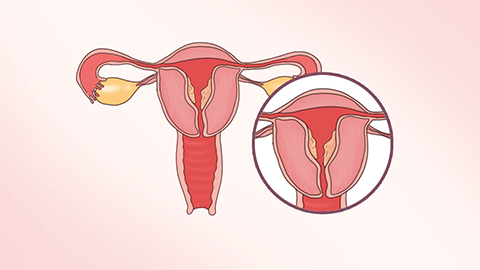How is adenomyosis treated?
Adenomyosis may be related to factors such as aging, abnormalities of the reproductive organs, improper induced abortion procedures, endocrine disorders, and endometritis. Treatment usually involves a comprehensive approach including medication, surgical treatment, interventional therapy, and lifestyle modifications to relieve symptoms and control disease progression. If abnormalities occur, timely medical consultation is recommended. Detailed analysis is as follows:

1. Aging: With increasing age, some women experience declining ovarian function, leading to abnormal hormone secretion that may stimulate excessive growth of the endometrium, thereby triggering adenomyosis. Medications such as gestrinone capsules, levonorgestrel tablets, and anastrozole tablets can be used to lower estrogen levels, or treatment with devices such as the Mirena intrauterine system may be considered. When necessary, surgical removal of the affected tissue may be considered.
2. Abnormalities of the reproductive organs: Adhesive occlusion or blockage of the female reproductive organs may prevent menstrual blood from flowing out smoothly, causing shed endometrial tissue to grow inside the uterus, leading to adenomyosis. Endometrial injury needs to be repaired, and surgical removal of the affected tissue can be performed, such as hysteroscopic endometrial resection, to restore normal uterine structure and function.
3. Improper induced abortion procedures: Some induced abortion procedures might implant endometrial tissue directly into the myometrium during the operation, leading to adenomyosis later on. Symptoms such as dysmenorrhea and menstrual irregularities may accompany this condition. Pain can be relieved under a physician's guidance with medications such as aspirin tablets, acetaminophen tablets, or ibuprofen tablets. When necessary, surgical treatment such as adenomyosis lesion resection or hysterectomy may be required.
4. Endocrine disorders: Endocrine imbalances may cause hormonal disturbances in the body, affecting normal endometrial growth and increasing the risk of developing adenomyosis. Accompanying symptoms may include menstrual irregularities and mood swings. Treatments include lifestyle modifications such as maintaining adequate sleep, balanced nutrition, and appropriate physical activity to improve endocrine function. When necessary, medications such as progesterone capsules, propylthiouracil tablets, and medroxyprogesterone acetate tablets may be used for regulation.
5. Endometritis: Endometritis occurring after childbirth or in other situations, if not treated promptly, may cause rupture of normal tissue layers, leading to abnormal implantation of the endometrium and eventually developing into adenomyosis. Possible accompanying symptoms include abdominal pain and abnormal vaginal discharge. The main treatment involves anti-infective therapy using medications such as metronidazole tablets, levofloxacin tablets, or ornidazole vaginal suppositories, along with maintaining local cleanliness and dryness to prevent the spread of infection. For established adenomyosis lesions, surgical removal may be considered.
Patients with adenomyosis should maintain a healthy lifestyle, including balanced nutrition, appropriate physical activity, and a positive mental state, to enhance physical health and immunity.




